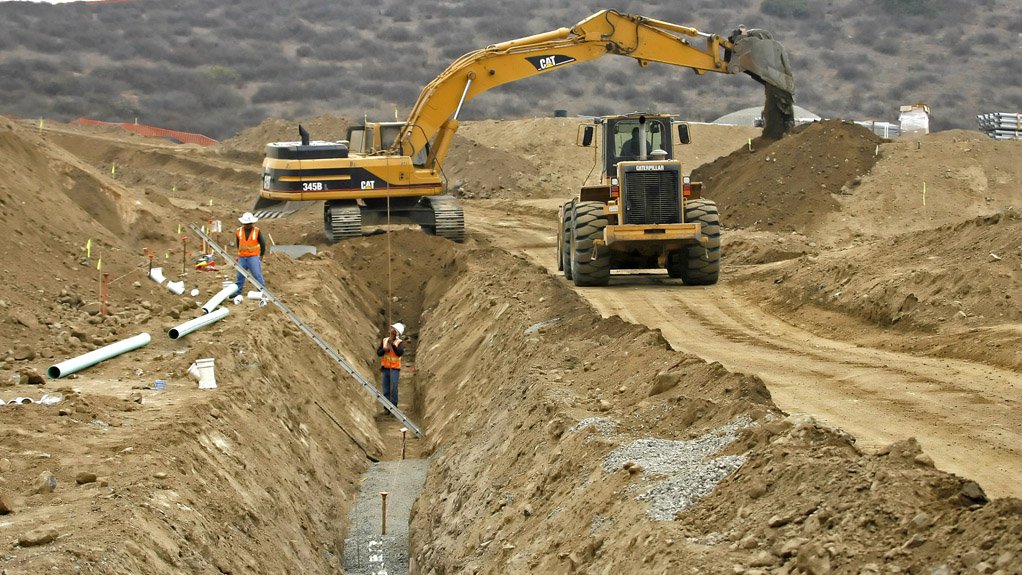Despite negative perceptions, South Africa’s economy remains resilient, while the construction industry remains healthy and continues to perform well, says JSE-listed openpit mining company and industrial mineral and construction material supplier Afrimat CEO Andries van Heerden.
This is evident in the Afrimat Construction Index (ACI) having expanded by 22.7% between the third quarter of 2010 (the base period) and the first quarter of this year, which is more than double the rate of growth in the economy as a whole (in real terms).
After reaching an eight-quarter high of 127 in the fourth quarter of last year, the ACI decreased to 122.7 in the first quarter of this year; however, the construction sector at large remains on a stronger footing than in 2010 (seven years ago).
The ACI, which is released quarterly, is a composite index of the level of activity in the building and construction sectors and is compiled by economist Dr Roelof Botha on behalf of Afrimat.
The ACI is calculated from nine constituent indicators: the volume of building materials produced; the sales value of building materials; the value of buildings completed in larger municipalities; the value of building plans passed by larger municipalities; the First National Bank/Bureau for Economic Research (FNB/BER) building confidence index; the FNB/BER civil construction index; retail trade sales of hardware, paint and glass; formal employment in construction; and the value added by the construction sector.
The ACI index trend has not escaped the negative impact of recent events, which include the dismissal of Pravin Gordhan as Finance Minister in March; allegations of State capture; a ratings downgrade of sovereign bonds to junk status by two influential credit ratings agencies; and a return to a technical recession.
Nevertheless, the expansion in construction activity up to the first quarter of 2017 as indicated by the ACI has been driven mainly by improved retail sales values for hardware, glass and paint, and the volume of mined building materials.
Confidence levels in the construction sector were also considerably higher in the first quarter of this year than what they were in 2010, with more than 400 000 additional formal-sector jobs created in construction since the base period.
However, the value of building plans approved by the larger municipalities was the worst-performing indicator in the period.
Botha notes that the ACI is likely to remain under pressure during the second quarter, owing to the declining trend in overall business confidence, sociopolitical unrest and a delay by the South African Reserve Bank in adopting a more accommodating approach to monetary policy.
Further, the real value of outstanding mortgage loans has not yet recovered from the previous recession in 2009 and this traditional source of funding for a significant portion of construction sector activity remains expensive, he argues.
“Hopefully, the Monetary Policy Committee will acknowledge the realities of a lethargic economy, including the absence of demand inflation, and start lowering interest rates in July,” Botha suggests.
Botha adds that the industry will, nevertheless, continue to be boosted by government expenditure programmes in economic and municipal infrastructure and human settlements, which are collectively valued at more than R285-billion in the current fiscal year.
Adaptation
Activity in the construction sector, as indicated by the ACI, bodes well for the economy and players that can adapt and embrace circumstances, Van Heerden stresses.
“The Afrimat strategy is supported by our experience over the past six years. Companies involved in the construction sector had to box cleverly to source projects or supply product to the sector. Our research showed that several smaller projects were available and one simply had to adapt the model a little to be successful.”
Van Heerden notes that Afrimat, which is active in many rural areas locally, is an example of a successful adaptation.
Edited by: Martin Zhuwakinyu
Creamer Media Senior Deputy Editor
EMAIL THIS ARTICLE SAVE THIS ARTICLE
ARTICLE ENQUIRY
To subscribe email subscriptions@creamermedia.co.za or click here
To advertise email advertising@creamermedia.co.za or click here















